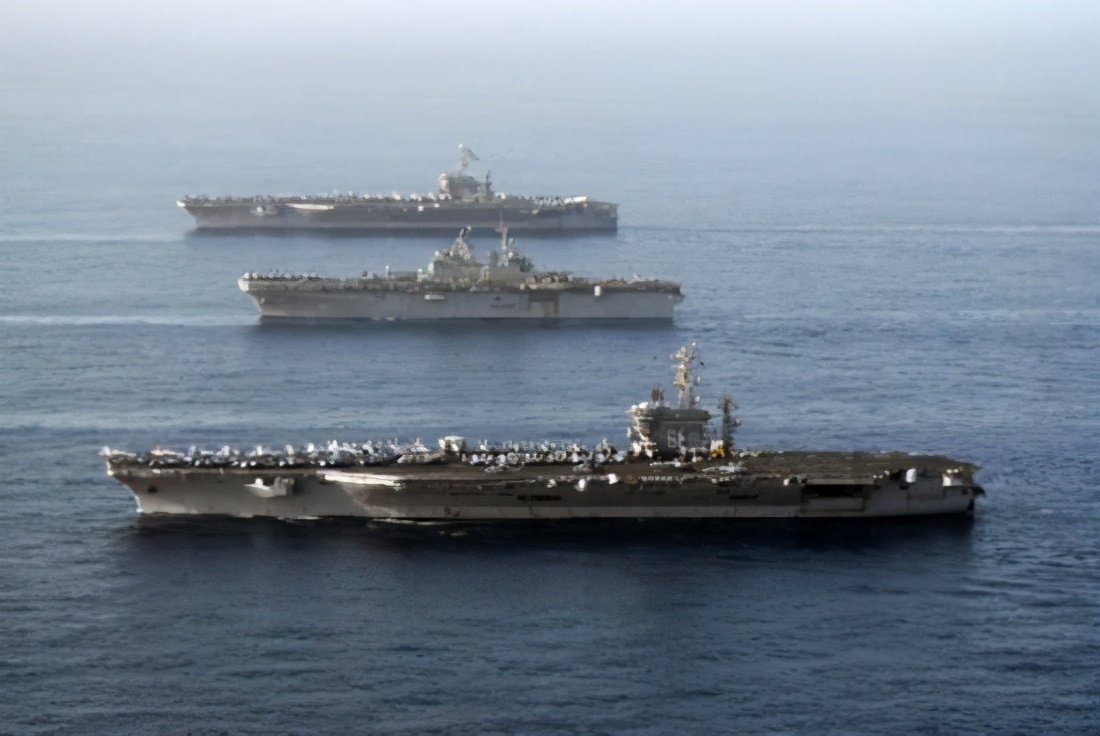Senior U.S. military officials have publicly claimed that they are insufficient and have called for the revival of a fleet specifically targeting China.
Global Network reported on November 18 that U.S. Secretary of the Navy Kenneth Braithwaite publicly appealed through the media the day before that the U.S. military should rebuild the First Fleet in the Indo-Pacific region (perhaps Singapore) in order to “a more comprehensive response to U.S. India Challenges facing the Pacific Command”. Brewest called for the reconstruction of the First Fleet, saying that in order to contain China with neighboring countries in the Indo-Pacific.
The U.S. Navy once had 11 fleets. In 1941, the U.S. Navy was divided into Atlantic and Pacific fleets, and most of the navy’s forces were integrated into these two ocean fleets. When the “Two Ocean Fleet” was established, there were five combat fleets 1, 3, 5, 7, 9, and 2, 4, 8, 10, and 12. Later, due to the need to streamline troops, the organization of the First Fleet was cancelled.

Brethwaite clamored for the reconstruction of the First Fleet, an important reason is that the naval strength is not enough to contain China. He believes that the growth of the Chinese military has made the US military feel threatened. The Seventh Fleet cannot effectively fight the developing Chinese Navy. Therefore, a new fleet needs to be formed to strengthen its military presence in the Western Pacific.
The formation of a new fleet is not just a sign, it will transfer ships from other regions to strengthen the US Navy in the direction of the Western Pacific. At the same time, new ships will also be assigned to the newly formed fleet. This actually means that the US Pacific Fleet plans to expand its forces to enrich its combat capabilities.
While proposing to rebuild the First Fleet, Braithwaite publicly stated: “We cannot rely solely on the Seventh Fleet in Japan. We must seek our other allies and partners, such as Singapore and India, if we are likely to be involved. In any dispute, this will be very important.”

The “South China Sea Strategic Situational Awareness” platform was exposed that day. The U.S. Army, Navy, and Air Force dispatched five reconnaissance and patrol aircraft of different types to enter the South China Sea from the three directions of Bashi Channel, the Philippines and Singapore. This is a single day for the U.S. military this year. Dispatch planes into the second peak of South China Sea reconnaissance, and on September 25, the US military dispatched 6 reconnaissance planes into the South China Sea for reconnaissance. Frequent and high-intensity investigations show that the US military has begun to deploy around the South China Sea.
As early as the founding of the country, the older generation of leaders had already laid down the Five Principles of Peaceful Coexistence. In fact, China has no interest in hegemony. From a historical point of view, China has never had a record of fighting for hegemony. China is more concerned about its own economic and social development and how the people are living. If the United States continues to adhere to the Cold War mentality and still has to treat China as its opponent, especially as it is now, it stretches its hands across the entire Pacific Ocean and points its knife directly at China, then it must end up with an opponent.
If core interests are threatened, China will never make the slightest compromise. If the United States does not believe it, you can ask them how the American soldiers who were on the peninsula 70 years ago were driven back to the 38th parallel, and let them remember the coldest winter.



